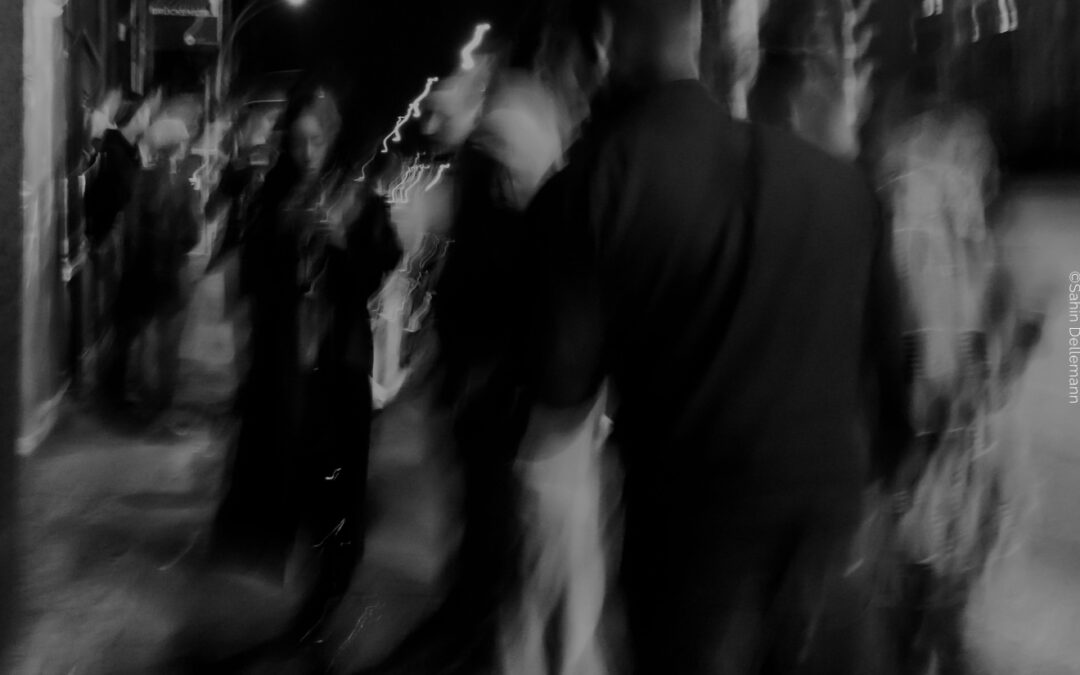Disclaimer: This article about sensory deprivation refers to people who have five senses. Of course, this type of BDSM play is also possible for people with disabilities.
What ist sensory deprivation?
Seeing, hearing, smelling, tasting and touching are the senses available to most people. In BDSM, people like to play with these, depriving, manipulating or numbing them with the help of various equipment. Deprivation comes from the Latin “deprivare”, which roughly means “withdraw”. It is also often referred to as “sensation play”, i.e. playing with the senses.
With the help of various means, one or more senses of a Bottom are restricted by a Dom, which in turn heightens the other senses or renders the person playing at the bottom completely helpless. Either way, an intense experience for the passive person.
Sensory deprivation can be both a game and a reward. For example, putting a Fetishist in a latex vacuum bed can be a form of reward. Sensory deprivation can become a punishment if it deprives someone of a source of pleasure or isolates the person. However, great care must be taken here.
What is special about this game?
Everyone has already experienced and played with certain forms of sensory deprivation. This makes this type of game “beginner-friendly” at first. A blindfold, for example, can certainly be found in a vanilla household. The enhancement, combination and also the mind play that goes hand in hand with this is what makes it so appealing. Something that is initially perceived as harmless can quickly turn into an intense and erotic experience.
Sensory deprivation suppresses and manipulates some of the senses, which automatically heightens the others and triggers a chain reaction in the mind of the bottom. If vision is restricted, hearing improves, as sensitivity to sound increases. If hearing is reduced, air is drawn in through the nose in the hope of recognizing familiar smells such as the hemp of a rope. Senses and perceptions that are otherwise only experienced in passing come to the fore.
What do you need for sensory deprivation?
Each of the five senses can be manipulated or deprived in its own way. The most popular means for this are: Blindfolds, breathing or gas masks, earplugs, gags and restraints. However, the possibilities are endless and can be adapted to the participants and their needs.
Simple examples include a perfume that is always worn during the session or scented candles to manipulate the sense of smell. More extreme would be to apply peppermint oil under the nose or a mask without nostrils. There are “blind” contact lenses and also in-ear headphones that can be played with brown or white noise. Taste can be manipulated to a certain extent via the nose, but gags, certain foods or even soaked pieces of fabric can also obscure this sense. For physical restraint, there are mono gloves, bondage and a thousand other ways to make someone immobile and prevent them from feeling. Everything can be extended at will and every form of extreme is possible.
Extreme sensory deprivation is not uncommon in the BDSM scene. Latex vacuum beds or vacuum cubes enclose the whole body, sometimes even the head.Mummification in plastic wrap, with bandages or rope is also a fetish in its own right, often combined with gas masks.These restrict the senses even more.There are numbing creams that “paralyze” skin areas and body parts and make them numb – a form of tunnel play. Here too, there are almost no limits to the imagination.
What is important with sensory deprivation?
Try out the equipment beforehand to find out how intense the effect is. If you only want to use sensory deprivation to intensify one type of play, be aware of the impact this can have.A blindfold when tying up intensifies the perception of the rope, creates more fear during knife play and can make the blows unexpected and violent during an impact session.
Therefore, talk about your boundaries and limits beforehand, reach an agreement for these situations together and clarify your safe words, including non-verbal ones.Clarify clear gestures that give your sub the opportunity to react non-verbally. If someone loses the ability to hear, speak and use hand signals, then other ways must be found to express “more”, “less” or “change position”. If a sub needs signs of praise, affection and security during a session but cannot hear them, gestures or perhaps even smells must be found. As endless as the possibilities are for restricting the senses, it is exciting to sensitize others to your needs.
Is sensory deprivation dangerous?
Sensory deprivation is also widely used in consciousness research. For example, there are entire tanks in which all senses are suppressed. Short-term sensory deprivation is also popular in esotericism and meditation to increase self-awareness and concentration. However, hallucinations, panic and changes in consciousness can occur with prolonged and intensive use.
The UN Charter of Human Rights and the European Convention on Human Rights consider prolonged and extreme sensory deprivation to be torture.In detention facilities such as Guantanamo, complete sensory deprivation in combination with sleep deprivation is used as so-called “white torture”, as no visible signs of torture remain.
In BDSM, however, sensory deprivation always takes place in a consensual, agreed framework. Nevertheless, it is important to be aware of these things. While many means of sensory deprivation sound quite harmless at first, they become more intense over time and with increasing external impact. On the one hand, the lack of influences means that you can listen to yourself and experience things better, but at the same time the opportunities to compensate for discomfort and negative feelings are reduced. This can quickly lead to emotional irritation and panic or anxiety. So be extremely attentive and sensitive.









